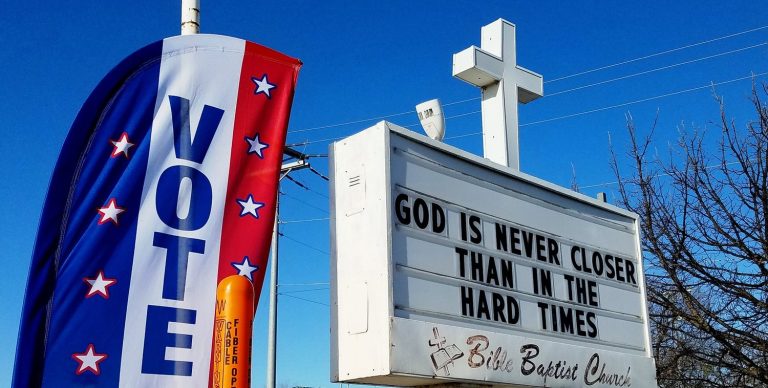
[ad_1]

The first caveat is that the relationship between attendance and a Republican vote has basically looked the same in the previous four presidential elections. When Donald Trump won the Republican nomination for president in 2016, one of the biggest questions was if religiously active Republicans would support him.
A better question would have been whether we should assume that the candidate actually has any impact on the voting patterns of Americans. In “20 Myths,” I wrote an entire chapter about this. Joe Biden did a little *worse* among White Catholics than Hillary Clinton four years earlier. And the guy goes to Mass every weekend!
Thus, it’s helpful to go into any election with the assumption that not much is going to change in how folks vote every four years. Very religiously active folks are more likely to vote for Republicans. That was true with McCain in 2008. It was true with Trump in 2020.
Just to put a fine point on this, here’s the Republican share among White voters from never attenders to weekly+ attenders.
2008: 29% → 82% (+53)
2012: 30% → 82% (+52)
2016: 38% → 82% (+44)
2020: 34% → 85% (+51)
So, 2016 was a bit of an outlier but not by a ton. And really that was more about never attenders being slightly warmer toward Trump than anything else.
But notice something subtle I did there? I was only discussing White voters, not people of color. And when you bring them into the conversation, the narrative changes a whole bunch.
While more religiously active people of color were more likely to vote for the Republican, the pew gap is just not that big.
Here’s the pew gap (percent vote for the GOP among weekly+ attenders minus the percent vote for the GOP among never attenders) for White voters versus people of color:
2008: 53 points, 20 points
2012: 52 points, 15 points
2016: 44 points, 11 points
2020: 51 points, 13 points
When we talk about religious attendance and voting patterns, we really need to put a racial qualifier on there. There’s just a huge difference between White and non-White Americans on religious attendance and the ballot and it can’t be ignored.
Let’s shift the focus a bit now and look just at Donald Trump — specifically, his approval rating in 2020. I like approval rating because it doesn’t map exactly onto vote choice. You can dislike someone but still vote for them. So, this is Trump’s approval in late 2020 broken down by religious attendance and race.
[ad_2]
Source link